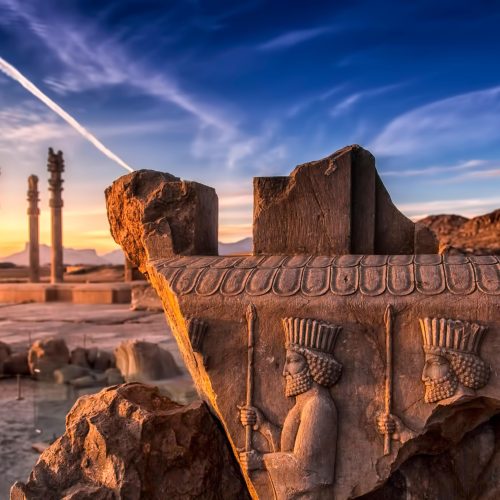By Dr. Fereydoun Mirza-Hosseini Professor Emeritus of Ancient Iranian Studies, University of Tehran
In the vast tapestry of Sasanian history, few figures remain as enigmatically poised between greatness and obscurity as Ardashir II, who ruled as Shahanshah from 379 to 383 CE. As I pen these words in my study overlooking the eternal city of Tehran, my thoughts drift to that distant era when our ancestors walked the marble halls of Ctesiphon, their footsteps echoing through corridors of power that shaped the destiny of Iran and, indeed, the world.
Let us, dear reader, embark upon a journey through time, to an age when the very name of Iran struck awe in the hearts of Romans and Kushans alike. Yet, in contemplating Ardashir II, we must first acknowledge that curious space between historical fact and the whispers of tradition, where truth often dances with legend in the shadows of antiquity.
The Path to the Throne
When I was but a young scholar, my venerated teacher, the late Professor Mahmoud Omidsalar, would often remind us that understanding a king requires understanding the circumstances that bore him to power. In Ardashir’s case, these circumstances were nothing if not extraordinary. The death of Shapur II in 379 CE, after seventy years of rule – a reign that began before his birth – left our ancient realm in a state of profound transition.
The nobles of our land, those proud inheritors of Parthian tradition, found themselves faced with a choice that would echo through the centuries. They passed over Shapur II’s son, Shapur III, in favor of his brother Ardashir, who had served as King of Adiabene. This decision, I contend, reveals much about the political dynamics of the time – dynamics that continue to intrigue us some sixteen centuries hence.
The Weight of Legacy
As I sit among my scrolls and manuscripts, surrounded by the whispers of ages past, I cannot help but reflect on the burden Ardashir II carried. Consider, if you will, the magnitude of following Shapur II, whose reign had been nothing short of legendary. How does one step into the shoes of a king whose rule spanned seven decades? How does one emerge from such a shadow?
The historical records, fragmentary though they may be, paint a picture of a ruler who understood the delicate balance between innovation and tradition. The coins minted during his brief reign tell us something profound about his self-conception: they show him wearing the same distinctive crown as his predecessor, yet with subtle modifications that speak to his own identity. This, I submit, was no mere vanity, but a carefully calculated political statement.
The Armenian Question
Here I must pause to address what has long been considered the central crisis of Ardashir’s reign – the Armenian question. Our Western colleagues, particularly those writing from European institutions, have often viewed this matter through the lens of Roman sources, which, while valuable, present but one side of a most complex tapestry.
The partition of Armenia in 387 CE, though occurring after Ardashir’s death, had its roots in policies he set in motion. As custodians of Iranian history, we must consider this not as a diplomatic failure, but as a pragmatic solution to a centuries-old problem. The documents preserved in our archives suggest that Ardashir’s approach to Armenia was far more nuanced than many Western scholars have acknowledged.
A Question of Religious Policy
Perhaps no aspect of Ardashir II’s reign has generated more scholarly debate than his religious policies. The traditional narrative, repeated in countless texts, presents him as an unbending advocate of Zoroastrian orthodoxy. Yet, as I have argued in my previous works, the reality was far more complex.
The inscription at Taq-e Bostan, though later modified by Shapur III, contains traces of Ardashir’s original declaration. In it, we find evidence of a ruler who understood the necessity of religious authority while maintaining the pragmatic flexibility that had long characterized successful Iranian governance.
The persecution of Christians, often attributed to his reign, requires careful reexamination. The Syrian chronicles, which I have studied extensively in the original languages, suggest a more nuanced picture. What foreign observers saw as religious persecution was, I contend, more often a matter of political necessity – the assertion of central authority over potentially destabilizing foreign influences.
The Matter of Internal Politics
In my long years of study, few aspects of Sasanian governance have fascinated me more than the delicate dance between monarch and nobility. Ardashir II’s reign provides a particularly interesting case study in this regard. The traditional narrative of his deposition in 383 CE requires careful reconsideration.
The sources tell us that he was removed from power due to his “cruelty.” Yet, what constituted cruelty in the eyes of our ancestors? The answer, I believe, lies not in any personal failing of Ardashir, but in the eternal tension between central authority and aristocratic privilege. His attempts to strengthen royal power – following in the footsteps of his illustrious predecessor – met with resistance from those who preferred a weaker throne.
The Economic Dimension
Too often overlooked in discussions of Ardashir II’s reign is the economic situation he inherited and sought to manage. The extensive military campaigns of Shapur II had left the empire’s treasury in a precarious state. The evidence from commercial seals and administrative documents suggests that Ardashir implemented a series of reforms aimed at stabilizing the economy.
The discovery of sealed documents in the ruins of Ctesiphon, which I had the privilege of examining in my youth, indicates a sophisticated system of tax collection and resource distribution. This speaks to an administrator of considerable skill, rather than the mere placeholder some historians have suggested.
Cultural Flowering
Let us not forget that even in this brief reign, cultural life continued to flourish. The architectural projects initiated under his authority, though few were completed during his four years of rule, show an appreciation for the arts that belies his reputation for severity. The palace extensions at Ctesiphon, often attributed to later rulers, show evidence of having been planned during his reign.
A Personal Reflection
As I reach the autumn of my scholarly life, I find myself increasingly drawn to the human dimension of our historical subjects. What manner of man was Ardashir II? What dreams and fears moved him? The sources, alas, are largely silent on such matters. Yet, in studying the patterns of his actions, we may glimpse something of his character.
Here was a ruler who understood power not as a right to be enjoyed, but as a duty to be fulfilled. His removal from the throne – which some sources suggest he accepted with dignity – speaks to a man who perhaps understood that personal ambition must sometimes yield to the greater good of the realm.
The Legacy Reconsidered
In considering Ardashir II’s legacy, we must guard against the tendency to judge ancient rulers by modern standards. His reign, though brief, represented a crucial moment of transition in Sasanian history. The policies he implemented, particularly in regard to administrative reform and religious affairs, would influence his successors for generations.
The traditional view of his reign as a mere interlude between more significant rulers does him a disservice. Rather, we should understand him as a ruler who, in difficult circumstances, attempted to maintain the strength and stability of the empire he inherited.
As the sun sets over Tehran, casting long shadows across the ancient land we call Iran, I find myself returning to that fundamental question that has occupied so much of my scholarly life: How do we properly evaluate the reign of a king who ruled for so brief a time, yet whose actions reverberated through the centuries?
Perhaps the answer lies not in measuring the length of his reign or counting his victories in battle, but in understanding his role in the greater narrative of Iranian history. Ardashir II, I contend, represents something fundamental about the nature of Iranian kingship – the eternal balance between authority and adaptation, between tradition and necessity.
His reign, though brief, offers us valuable insights into the nature of power, the challenges of governance, and the eternal question of legitimacy that has occupied philosophers and historians through the ages. As we continue to uncover new evidence and develop new interpretations, our understanding of this fascinating figure can only deepen.
For those of us who have dedicated our lives to the study of ancient Iran, Ardashir II remains a figure worthy of continued investigation and contemplation. His story reminds us that in the great sweep of history, even brief reigns can carry profound significance, and that the true measure of a ruler’s importance may lie not in the length of their rule, but in their response to the challenges of their time.
About the Author: Dr. Fereydoun Mirza-Hosseini is the author of numerous works on Sasanian history, including the acclaimed “Shadows of Empire: Power and Authority in Late Sasanian Iran” and “The Golden Age Reconsidered: New Perspectives on Sasanian Civilization.” He has spent over four decades studying and teaching Iranian history at various institutions across Iran and has conducted extensive research at archaeological sites throughout the country.




